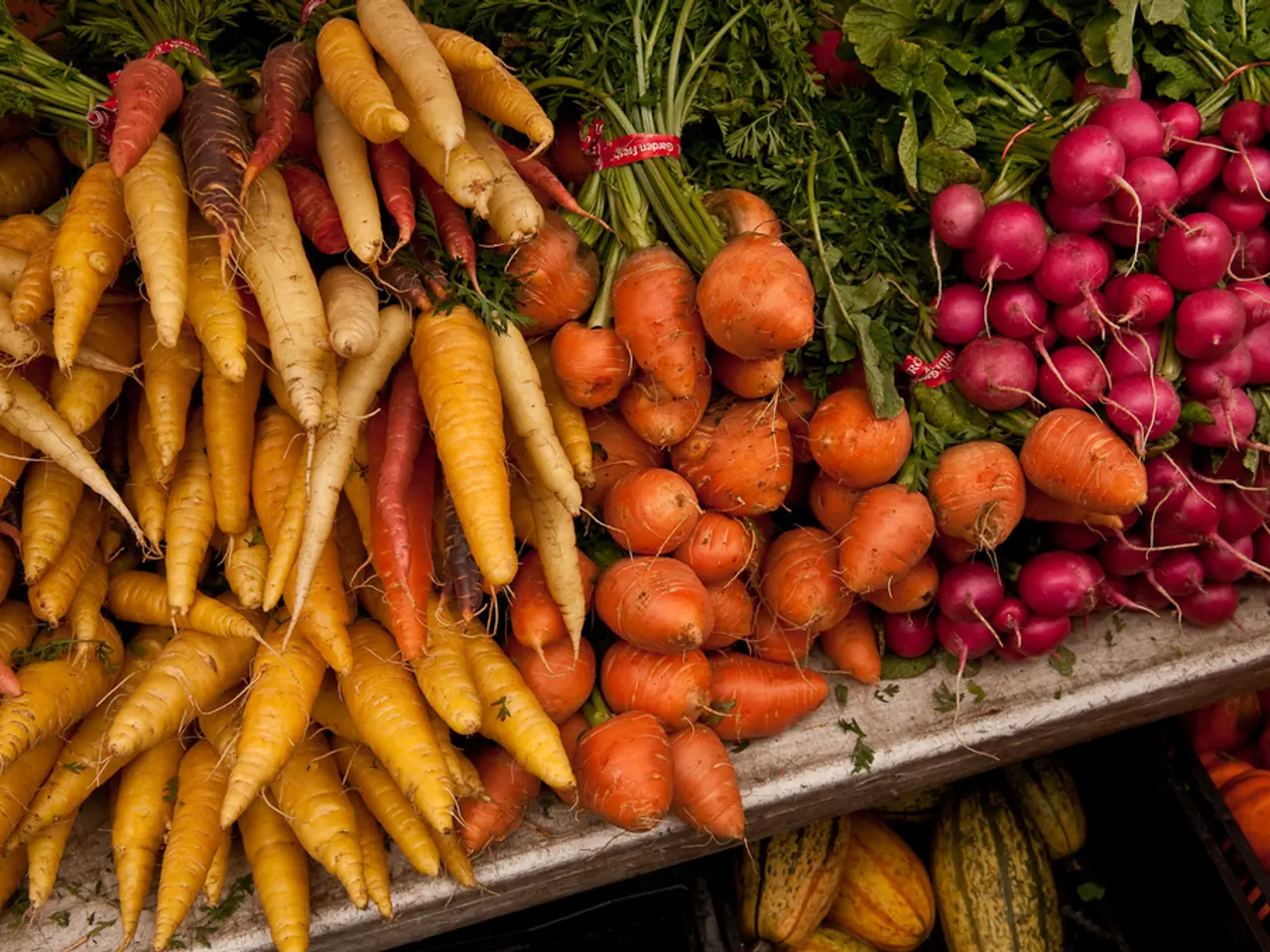Guide to Eco-friendly Protein Sources: Focus on Sustainable Legumes
In the quest for a greener planet, one small change that can make a significant impact is the food choices we make. When it comes to sustainability, certain beans and legumes stand out as top choices.
Black beans and mung beans, in particular, are environmentally friendly options. They have lower greenhouse gas (GHG) emissions, land use, and water use compared to animal proteins and many other crops[1][2]. Black bean production generates up to 90% less GHG emissions per kilogram of protein relative to meat such as beef or lamb[1]. Mung beans are noted for their low carbon footprint, efficient land and water use, and ability to grow in rotation with other crops, which enhances sustainability[2].
When shopping for sustainable beans and legumes, there are several strategies to follow:
- Select legumes like black beans and mung beans. These options have a lower environmental impact in terms of GHG emissions, land use, and water use compared to animal proteins and many other crops[1][2].
- Buy locally grown and organic beans. This reduces emissions associated with long-distance transport and synthetic pesticide use, contributing to a lower carbon footprint and healthier soils[4].
- Eat seasonally and support Community Supported Agriculture (CSA) programs. This helps reduce the carbon footprint and supports sustainable agricultural practices[4].
- Reduce overall meat and dairy consumption by substituting with plant-based proteins like beans and legumes, which can substantially cut GHG emissions and resource use[1][2][5].
- Minimize food waste by choosing dried beans or legumes with long shelf lives, such as mung beans, and by planning meals carefully to avoid excess[2].
For those who prefer convenience, opt for BPA-free cans from sustainable brands. When buying imported legumes, research the brand's transparency about farming practices and supply chain to determine the sustainability of the products[6].
Dried legumes have a 60-70% lower overall environmental impact compared to canned legumes when factoring in processing and packaging[7]. Buying organic legumes in 5-10 pound quantities reduces costs by 20-30% through bulk purchasing[8].
Proper storage in cool, dry, and dark conditions can maintain quality for 2-3 years[9]. Canned legumes retain the most nutritional and soil health benefits from their growing phase, but add packaging and processing energy[10]. Batch cooking and freezing in portion sizes reduces energy consumption and increases convenience[11].
Labeling containers with purchase dates helps manage inventory and ensure freshness through first-in, first-out rotation[12]. Pressure cooking reduces cooking time by 60-70%, preserving more nutrients than traditional boiling methods[13].
Lentils offer 43 times lower carbon emissions than beef and require 75% less water than animal proteins[14]. Spring (March-May) is a time to stock up on stored legumes for sustainable protein sources[15]. Summer (June-August) is ideal for fresh peas and early varieties[16].
Individual food choices, when multiplied across millions of consumers, drive market transformation toward more sustainable food systems[17]. By following these practical strategies, consumers can maximise both environmental impact and cost-effectiveness[18].
Black beans provide a familiar taste for many palates while offering excellent sustainability credentials and nutritional density[19]. North America's peak harvest season for nitrogen-fixing crops like lentils, chickpeas, and dry beans is September-November[20]. The Mediterranean Region's optimal time for chickpeas and fava beans is May-July[21]. Tropical Regions have year-round harvest for black and kidney beans[22].
When it comes to certifications, organic certification ensures no synthetic pesticides or fertilisers, but it isn't the complete sustainability picture. Look for additional certifications like Regenerative Organic or local sourcing for maximum environmental benefits[23].
Choosing sustainable legumes represents one of the most impactful dietary changes consumers can make for environmental health[24]. These legumes provide exceptional nutrition while actively improving soil health[25]. Local options typically have a lower overall environmental impact compared to imported legumes[26].
In conclusion, by making informed decisions about the beans and legumes we consume, we can contribute to a greener planet, healthier soils, and more sustainable food systems.
- The food choices we make, particularly the adoption of plant-based proteins like black beans and mung beans, can significantly impact sustainability.
- Black bean production generates up to 90% less greenhouse gas emissions per kilogram of protein than meat such as beef or lamb.
- When shopping for sustainable beans and legumes, opt for locally grown and organic options to reduce emissions and support healthier soils.
- By reducing overall meat and dairy consumption and increasing plant-based protein sources, consumers can substantially cut greenhouse gas emissions and resource use.
- Proper storage of dried legumes in cool, dry, and dark conditions can maintain quality for 2-3 years, while batch cooking and freezing can reduce energy consumption and increase convenience.
- By making these sustainable food choices, consumers can contribute to a greener planet, healthier soils, and more sustainable food systems, driving market transformation toward these goals.




